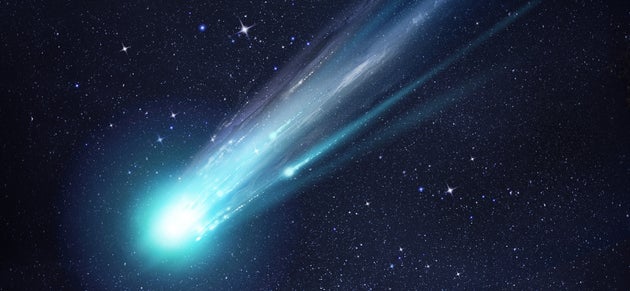We’re here to guide you through the coronavirus lockdown. Sign up to the Life newsletter for daily tips, advice, how-tos and escapism.
The Atlas comet, set to hurtle past Earth tomorrow, was predicted to put on a spectacular night-time display – with it touted to be the first brightly-lit comet visible to the naked-eye in more than a decade.
But sadly, it looks like that’s no longer going to be the case.
The comet, which is basically a ball of frozen gas, rock and dust, was discovered on December 29 by a telescope based in Hawaii.
Since then, astronomers have been watching it closely. They noticed it brightened quickly until mid-March, but then started to get dimmer.

It was speculated that the comet’s icy core might be breaking down – and amateur astronomer Jose de Queiroz confirmed this on April 11 when he was able to photograph three separate pieces of the comet.
Since then, Hubble – a space telescope that was launched into Earth orbit in 1990 and remains in operation – identified 30 fragments of the comet on April 20 and 25 pieces on April 23. The disintegrating comet was approximately 91 million miles from Earth when the latest Hubble observations were taken.
The Atlas comet will make its closest approach to Earth on May 23 – this Saturday – at a distance of about 72 million miles. Eight days later, it’s expected to skirt past the sun at 25 million miles. But it’s likely you won’t be able to see it.
Fear not. There’s always Comet Swan to keep an eye out for.
Amateur astronomer Michael Mattiazzo discovered the new comet on April 11, around the time Atlas was falling to pieces. Comet Swan is supposedly visible from now until mid-June, however your best bet of catching a glimpse is in the last week of May, says the Royal Astronomical Society.
It will be visible in the north-western sky after sunset for those based in the UK. You might need some binoculars to get a good look, though, as it will be skimming close to the horizon.



